Local Man Takes More Than His Camera and Camping Equipment on Hikes in the World’s Remote Regions
Story by Matthew St. Amand
Photography by Brian Blake
Nepal. November 2023. Two a.m. Windsor optometrist and photographer, Brian Blake, knew he was in trouble. He was 4,000 meters up in the Nepali Himalayas. His heart raced. He had difficulty breathing. Earlier that day he was unable to eat but managed to force down a bowl of soup when he and his porter, Bikram, and guide, Abinash, stopped for food.

“I hadn’t been able to sleep for a few days,” Brian recalls. “I had a headache, I felt confused. Our goal was the climb another thousand meters, but I just couldn’t do it. I had altitude sickness.”
The day before the sickness had really set in, Brian realized his heart had been beating 125 beats per minute for ten hours. Not good. So, Abinash carried Brian’s gear, and Bikram carried Abinash’s gear—along with his own—as they made their way back down to rest and reacclimate.
This was not Brian’s first adventure, or the first time he had been uncomfortable out in the wild.
“I guess I enjoy it, when I’m miserable,” Brian says with a laugh. “I appreciate how good life is. I’ve been cold and exhausted. I take it in stride. I’m at peace, the air is good, I go alone. I’m OK with being uncomfortable.”
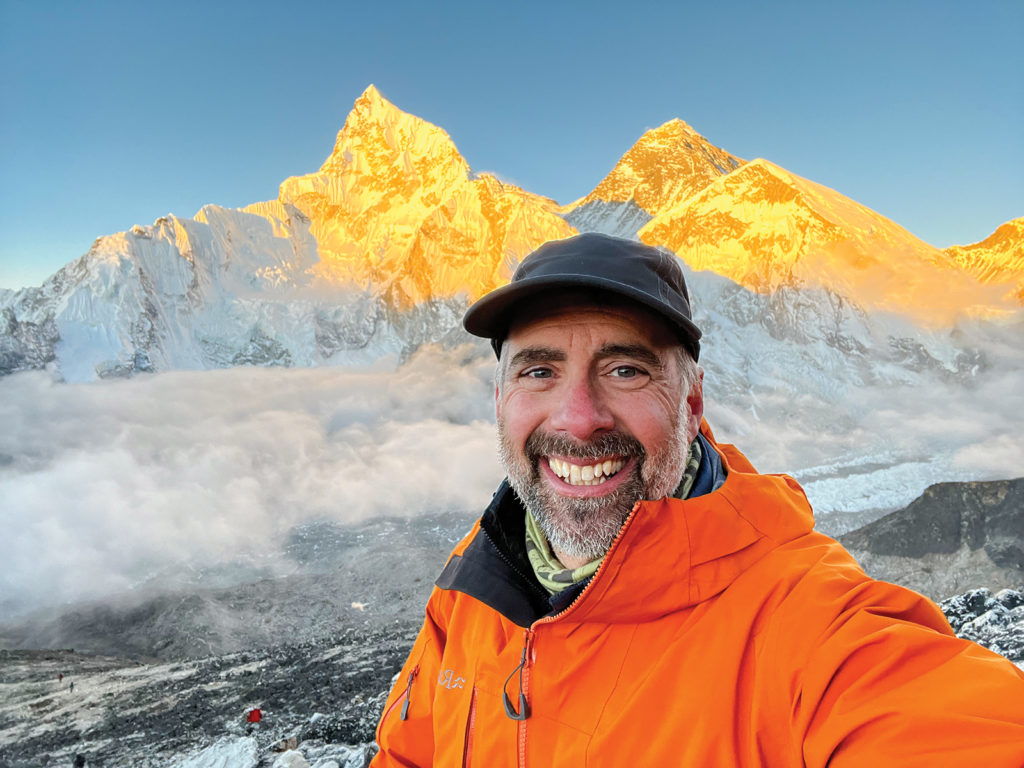
His first adventure took him to Yellowstone National Park and the Tetons (Grand Teton National Park) in 2013. The following year, he hiked for a couple of weeks in Utah’s Zion National Park and Bryce Canyon. Brian’s wife, Danielle, accompanied him on the next adventure to King’s Canyon National Park near Sequoia National Park, and the John Muir trail.
“We hiked forty-seven miles in five days,” Danielle says. “Brian did that with sixty-five pounds of equipment on his back! It was my first trip and he wanted to be sure I was comfortable, so he brought a hammock, camping chairs, his camera equipment—it was a lot!”
Year after year, Brian found new, monumental challenges where he spent weeks at a time alone, taking pictures, enjoying the solitude: Yoho National Park in Banff. Mount St. Helens in Washington State where he climbed to the top of the volcano accompanied by a geologist. Vancouver Island. Iceland. Extensive hiking and canoeing in Algonquin Park. Hawaii with Danielle, Christmas 2022. And then Mount Everest Base Camp.
What inspired such travel and physical and mental exertion?
“My wife and I lost our nine-year-old daughter, Gabi, in 2013,” Brian explains. “This grief drove me to the mountains for therapy. I hiked in Teton National Park to get clarity and now I make a trip each year. Every spot I hike to I bring a picture of Gabi and a little green stone—green was her favourite colour—to the remote places in the world, to be close to her, I guess.”
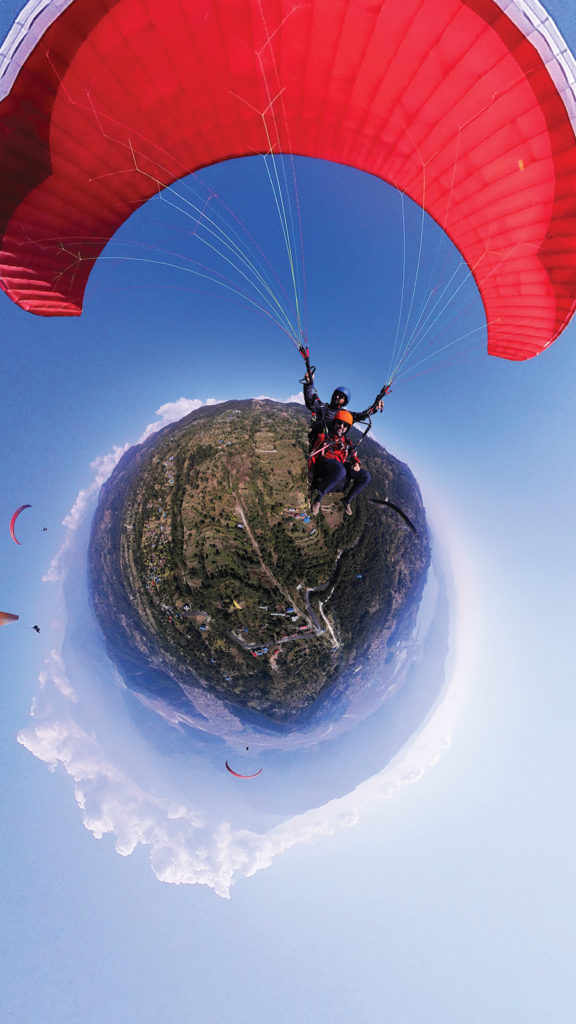
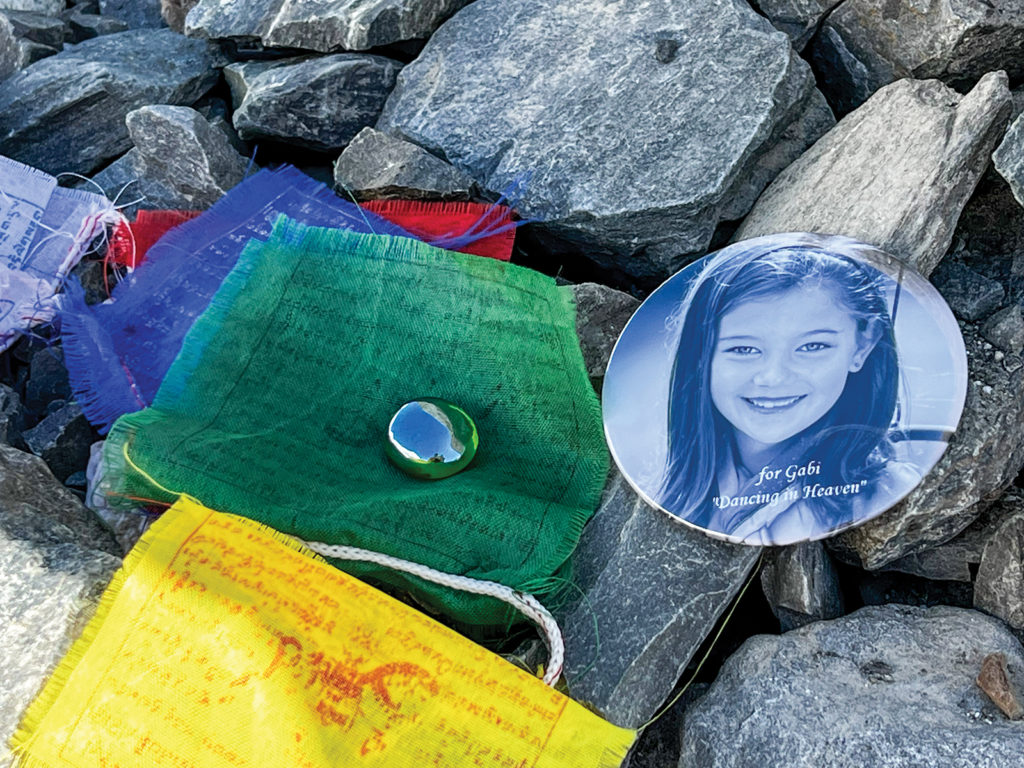
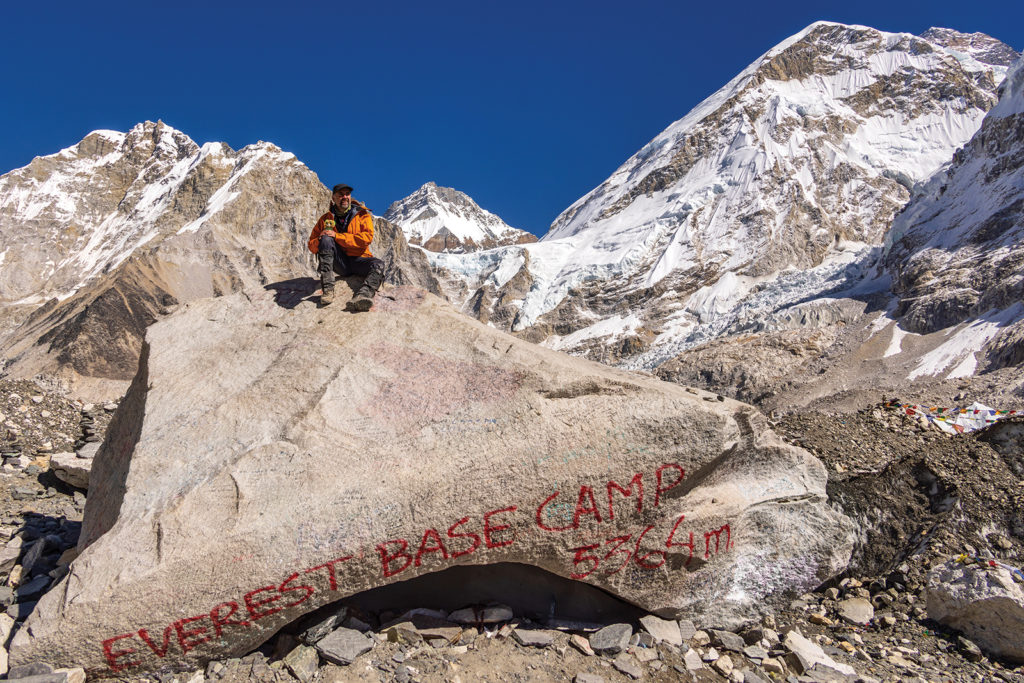
“I was worried the first time he went alone,” Danielle remembers. “It was scary knowing he was out there by himself in the Tetons, trying to cross a glacier. There was no cell reception. I made him get a satellite phone after that! And then I saw how good it was for him. Everyone grieves differently. The higher he climbed, the closer he felt to Gabi. I encourage him.”
Brian spent more than a month in Nepal. His experience with altitude sickness was just a blip on the radar for him. He and his guide and porter descended to 3,000 meters. With the help of Diamox—medication that combats altitude sickness—he continued with his journey.
“Abinash was interested in my camera,” Brian says. “I taught him how to use it and he took a photo of me hanging from a rock.”
Brian felt better when he got to Base Camp, though it was a challenge getting his protein while there.
“No meat is served above three-thousand-four-hundred meters,” he says. “It is a no kill zone. There were no yak steaks on the menu! Ordinarily, I just want a hamburger and a beer—that is what gets me down a mountain—but not in Nepal!”
Brian befriended a local optometrist named Sakar Subedi, with whom he connected over the Internet. Before this journey, Brian contacts a local counterpart and asks what optometry supplies he can bring along.
“He took me around to places that tourists never see,” Brian remembers. “They do not see many westerners there and people continuously came up to me to have their picture taken! We stopped in taverns and temples. I ate some pretty challenging local food. At night, the people burn yak dung in their stoves. I met hikers from all around the world. I will do more hiking there.”
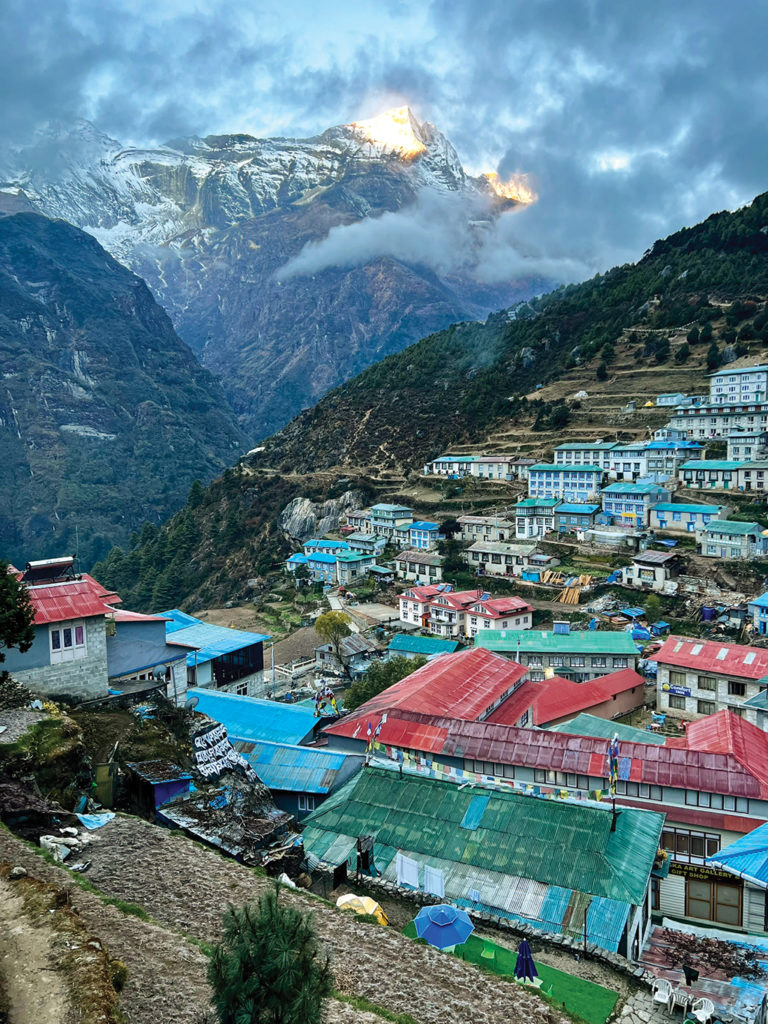
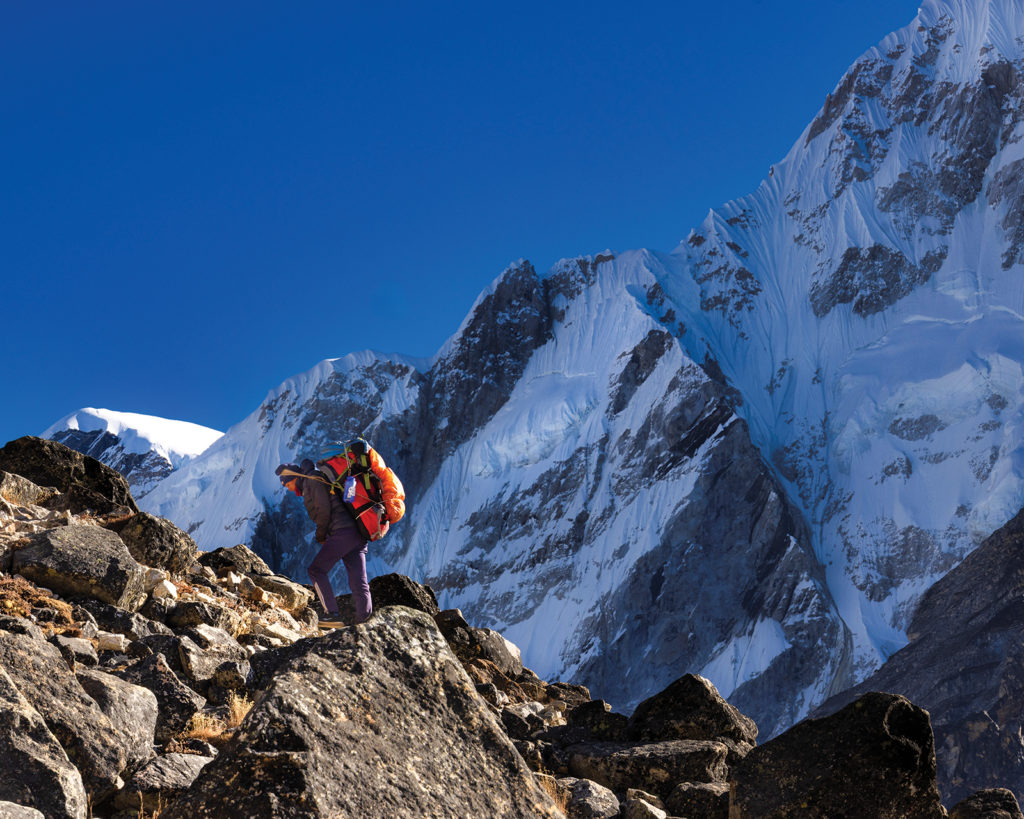
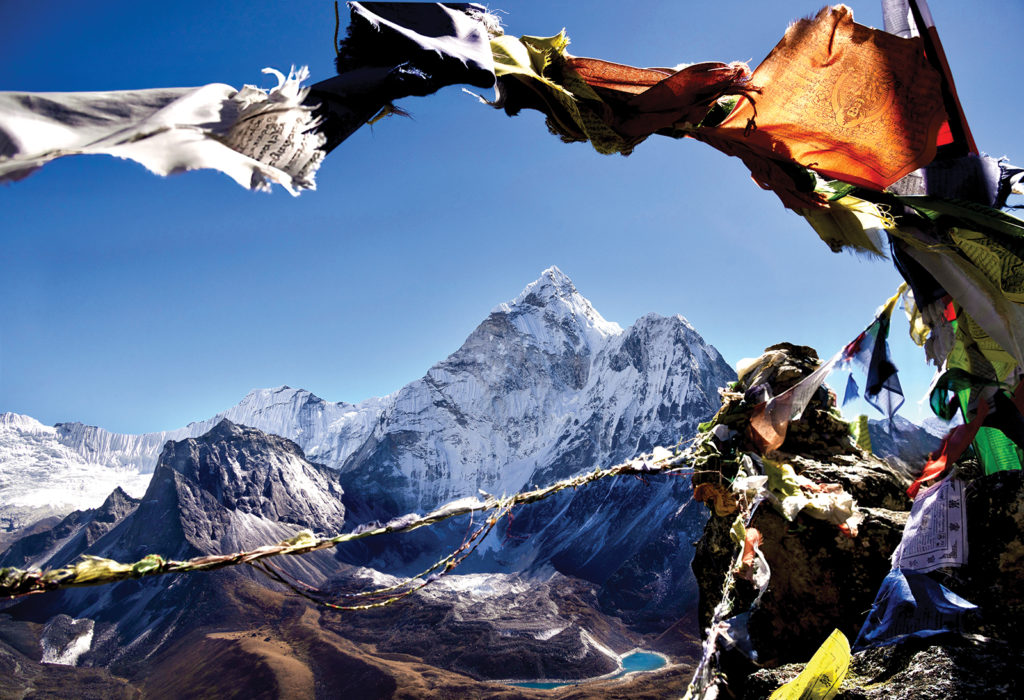
In the town of Pokhara—a ten-hour bumpy bus ride from Katmandu—Brian went parasailing and took a selfie with a 360-degree camera.
Among the uncountable breathtaking scenes Brian encountered, he captured the Chukhung Valley, which is in the Himalayas, a destination he has wanted to visit since he was a child.
“At the highest heights, you see Buddhist prayer flags,” Brian says. “Buddhists write prayers to the world on these flags and fly them high in the peaks to take the prayers out into the world. I saw Ama Dablam, one of the most beautiful mountains that I have been on. It is known as ‘Mother’s Necklace’—Matterhorn of the Himalaya.”
And there was no traveling to the region without photographing the tallest mountain in the world. Brian took a sunset selfie with Chomolungma—the Tibetan name for Mount Everest, which means “Goddess Mother of the World”—in the background.
He found the city of Katmandu equally enthralling.
“I spent a week in Katmandu,” Brian says. “It is such a great city. They have yoga, meditation, and temples everywhere. I felt very safe. The people are super friendly. My hotel cost twenty dollars a night. The food was good—I did not have a bad meal. It was more the conditions that made food challenging. The time of year I went, it was so cold up on the mountain, everyone wore their parkas and hats inside the tea houses. The jam I was served with toast, at one breakfast, was frozen to the point of being unusable.”
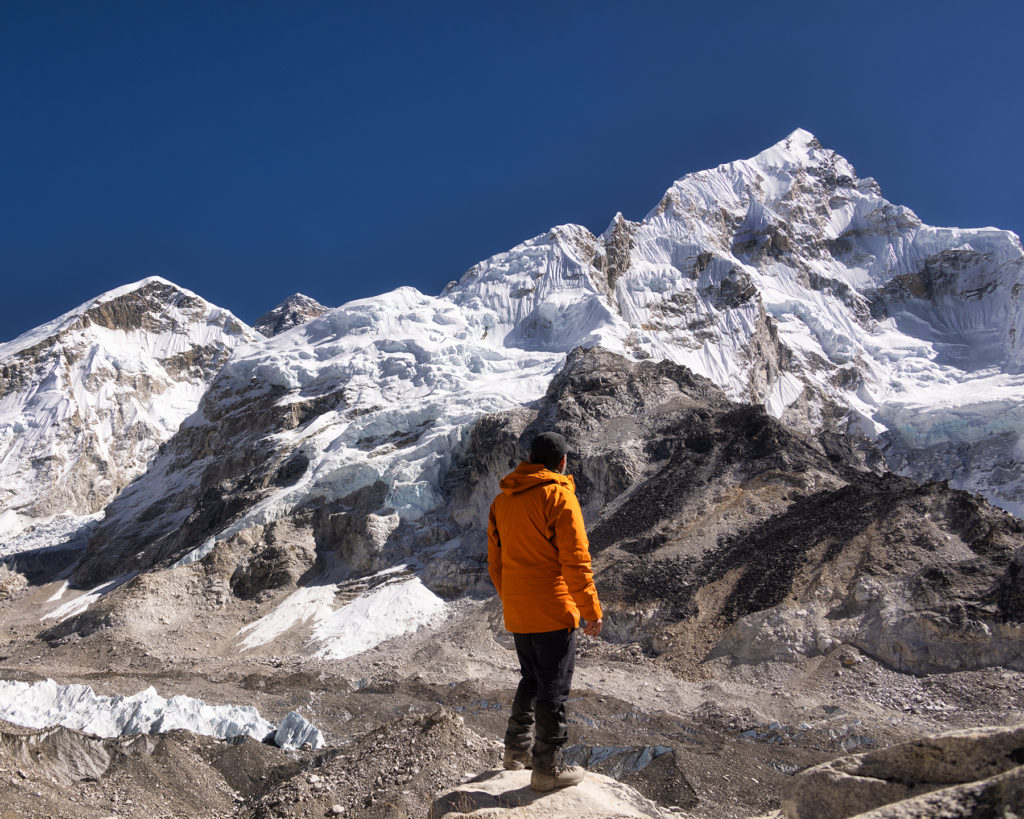
It is then that Brian speaks of the Three Types of Fun: “Type One,” he says, “is fun while you’re having the experience. Type Two comes a few weeks after the experience when the pain wears off. You can say: ‘Yeah, that was good!’ And Type Three fun is when you’re looking at the photos years later. I am OK with all three types. You just keep going.”
Brian recommends that everyone travel to Nepal at some point in their life.
“It is called ‘The Country of Smiles,’” he says. “The people there are amazing.”


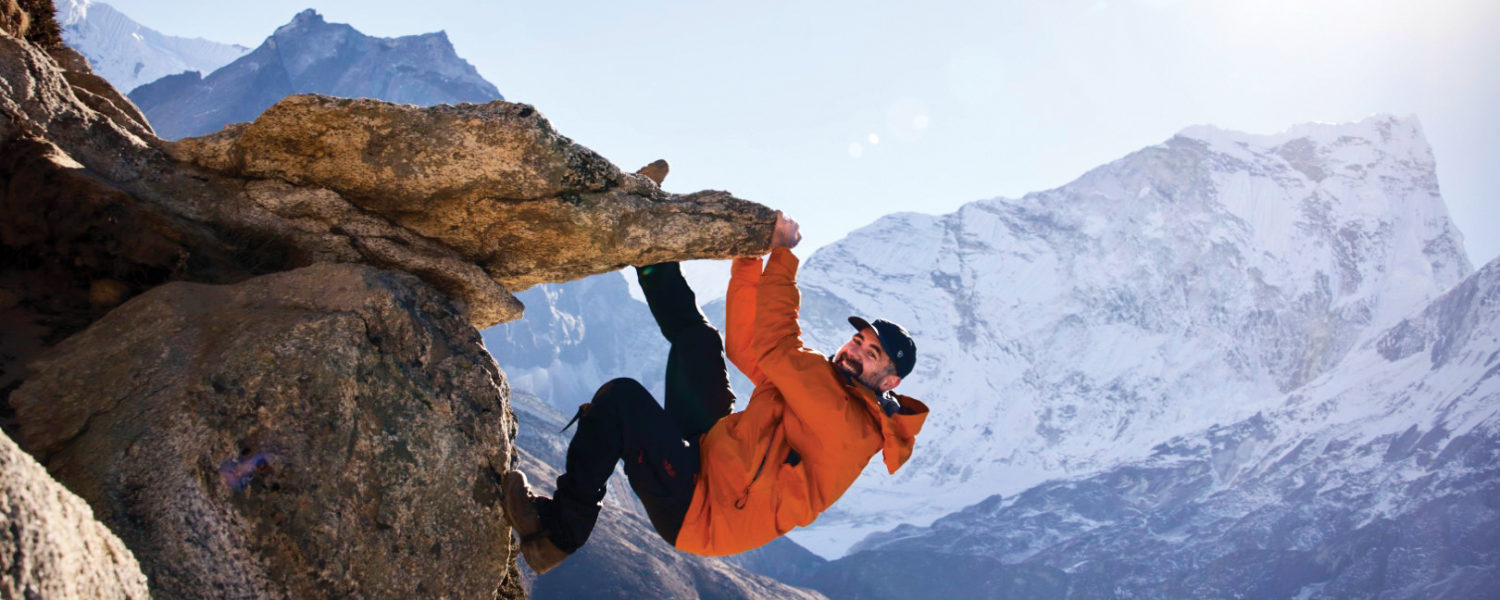

Add comment